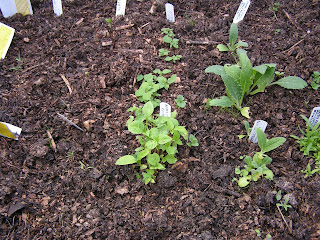Sorry I haven't been keeping up with the docmentation but I had a massive planting and I'm looking at a daunting list of things to docment which will take me a little while to transfer from paper to here.
After a couple of dry weeks we finally had some rain yesterday so everything should germinate soon. I've used up all the compost in the immediate vicinity so the next big job is shifting quite a few tons of compost from the other side of the farm to the new gardens.
I found that the deer had ripped off the tube and ring barked one of the cider apples I planted last autumn so I took some cuttings and made a bridge graft on it and grafted a few scions to other apple trees to try and save the variety. It was done a bit late so I may lose it but we have some 10 year old root stock that I'll be layering in the autumn and then we'll get serious with the fruit trees.
We have a new Wwoofer called Nicholas who's been a great help.
I will try and get this huge planting post out of the way in the next couple of days but for now I'm having a day off.



















